Generally speaking, there are five different types of renewable energy sources. Together, they have a range of uses and can act as a direct replacement for non-renewable alternatives. This article takes a look at the main types of renewable energy and how we can use them.
The Different Types of Renewable Energy
By making use of the following types of renewable energy, we can help to reduce our reliance on fossil fuels. This will not only help to conserve non-renewable resources but will also help reduce pollution.
1. Solar Energy
When we think of renewables, solar energy is often one of the first natural energy sources that come to mind. Each and every day, the sun emits large quantities of energy in the form of solar radiation. Eventually, some of this reaches the earth where we can harness it in a variety of different ways.
Although solar is one of the most popular renewable energy sources, it currently ranks third in global renewable energy capacity. This is according to a 2019 report by IRENA that looked at renewable energy generation capacity at the end of 2018. You can view the highlights of this report on the IRENA website.
Solar Photovoltaics
Solar photovoltaics (PV) is a technology we can use to convert solar energy into electricity. Here, solar panels are positioned to absorb energy from the sun. They are then able to use the solar PV process to create a flow of current.
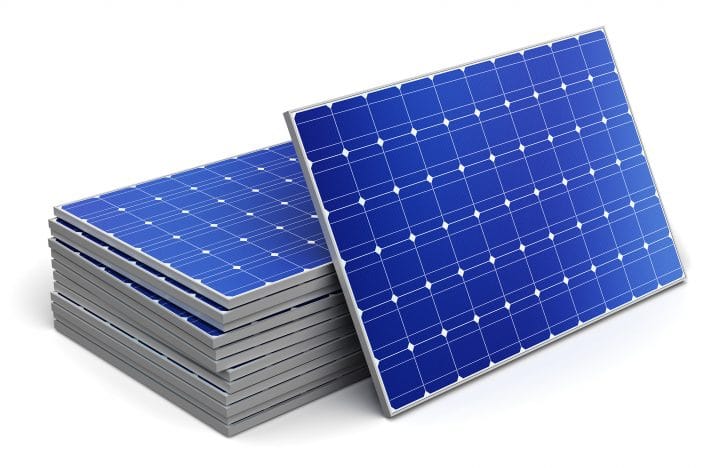
We can use solar power at either a domestic or industrial scale. Rooftop solar panels are a common sight on top of many homes around the world. They help to generate electricity for a household to use. Solar farms are an example of an industrial-scale use of solar energy. Here, large arrays of solar cells work together to create large amounts of electricity.
Solar Thermal
Solar thermal is another type of solar energy usage. Here, we can use energy from the sun to heat a fluid (such as water.) The technology can be found in domestic solar hot water systems. Solar thermal collectors are a device that you can use for this purpose. There are two main types known as ‘flat plate’ and ‘evacuated tube’ collectors.
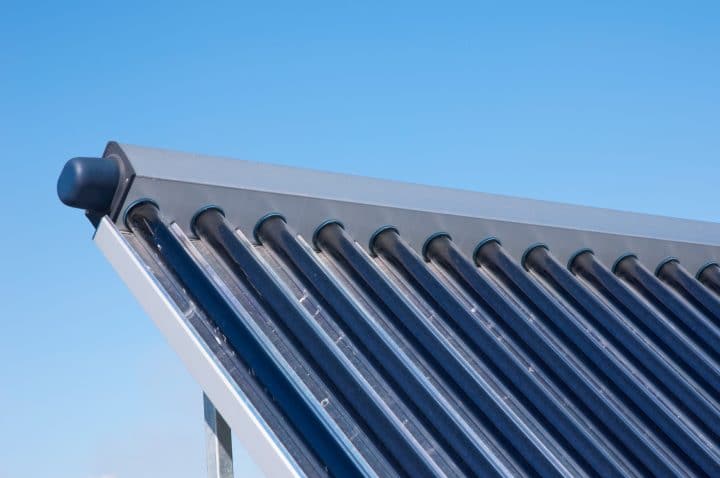
Solar thermal power plants also exist and can use solar thermal to generate electricity. This works by concentrating solar thermal energy to heat a special fluid. The heat of the fluid is then transferred to water, which then boils and produces steam. The steam is then able to power a turbine which turns a generator, thus creating electricity.
If you are interested in learning more about solar energy and how it works, take a look at this article which covers the topic in greater detail.
2. Wind Energy
Wind energy is another popular renewable energy source. We have made use of the wind for centuries in the form of sailboats and windmills. Nowadays, we mostly use the wind to generate power with the help of wind turbines.
Lots of countries use wind turbines to help meet their energy requirements. Depending on their location, they can be a very efficient means of generating electricity. Wind farms are a collection of wind turbines and can be found both on land (onshore wind farms) and out at sea (offshore wind farms).
The total capacity of wind power was slightly higher than that of solar in 2018. Wind energy took 24% of the total renewable energy generation capacity, with solar reaching 20%.
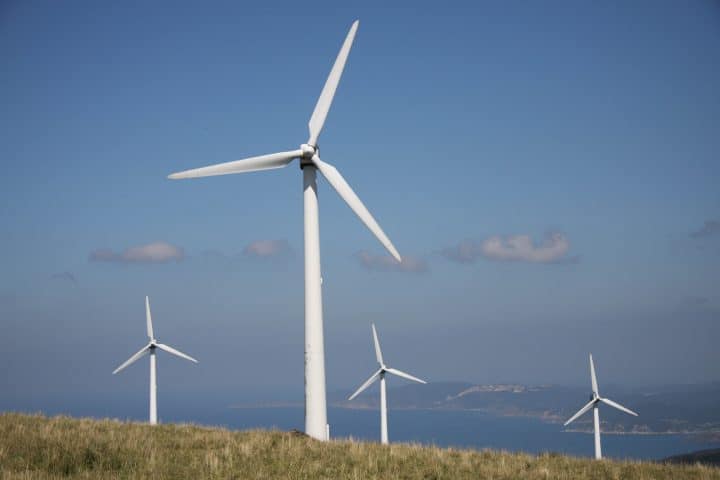
3. Geothermal Energy
Geothermal is another type of renewable energy. The ground beneath our feet contains large quantities of thermal energy. Close to the surface, the ground absorbs heat from the sun. Deep within the earth, magma can help to heat rocks. We can tap into this energy in different ways.
Domestic geothermal energy systems use ground source heat pumps to help heat the water of a home. This can involve the placement of hundreds of meters of water pipes several feet below the ground. As water flows through the pipes, it absorbs heat from the ground and will emerge at the other end slightly warmer than where it started. The process can then be repeated to enhance the effects.
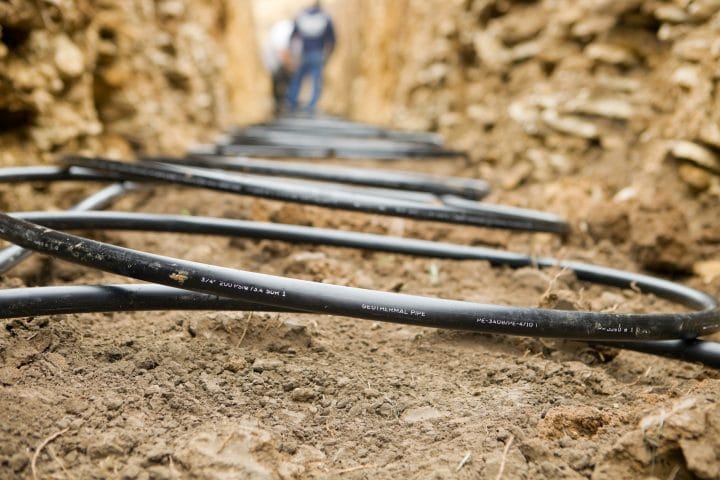
Geothermal power plants are an example of industrial use. Some of these installations can tap into super-heated rocks deep within the ground. Water can be pumped into a well which then produces steam and can be extracted to power a turbine. Power plants like these are only effective in areas where magma is closest to the earth’s crust, such as the ring of fire. Due to this geographic limitation, geothermal power is less popular than that of solar, wind, and hydro.
4. Hydro Energy
Hydro energy involves the use of moving water to generate power. We have used the technology for centuries in the form of water wheels. Nowadays, we use it mostly to generate electricity.
The source of water can come from different places. Some of the most common types of hydroelectric technologies include the following:
- Hydroelectric Dams – These use a dam wall to trap a large body of water. This can then be released through the structure of the dam, rotating a turbine in the process.
- Tidal Power – This uses underwater turbines to harness the energy of the tides. As tides come in and go out, the turbines rotate which can then generate electricity with the help of a generator.
- Wave Power – This is less common than the above, but has the potential to harness the kinetic energy of waves. Here, large tube-like containers are placed near to the coast. As they rock in the waves, they are capable of converting wave energy into electricity.
Hydroelectric power is something we often overlook when thinking about renewables. But, according to IRENA’s 2019 report, hydro energy accounted for 50% of renewable energy generation capacity at the end of 2018. This is more than solar and wind put together!
The three countries with the highest hydroelectric power capacity at the end of 2018 were China, Brazil, and the United States. China had a capacity of 352,261 MW, way ahead of Brazil at 104,195 MW and the United States at 103,109 MW.
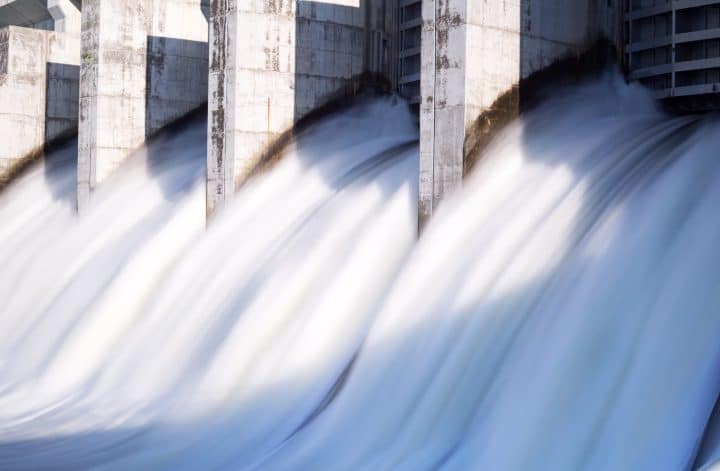
5. Biomass Energy
Biomass is another renewable resource. It uses organic matter for a range of different energy uses. Organic matter can include any of the following:
- Wood – Mostly from willow and poplar when power generation is concerned. Other sources include wood chips, sawdust, logs, and tree bark.
- Crops – This can include starchy crops such as wheat, corn, sugarcane, and potatoes. It can also include oily crops such as canola, rapeseed, soybean, and sunflower.
- Animal & Human Waste – Including manure, sewage, slurry, and animal bedding.
- Garden Waste – Such as fresh grass clippings that have not yet fully decomposed.
We can make use of the above in different ways as far as bioenergy is concerned.
Biomass Power
Here, wood is burnt to heat water. This then produces steam which can drive a turbine in order to generate electricity. It is a similar process to that of a traditional power plant that uses coal, oil, or gas.
Biofuels
We can use traditional food crops to make biofuels such as bioethanol and biodiesel. They can then be used in a compatible engine as a replacement for gasoline and diesel.
Biogas
This uses a process called ‘anaerobic digestion’ which involves the heating of animal or human waste in an air-tight chamber. As it heats, it decomposes more rapidly and produces methane. We can then capture this and store it for later use. It can be burnt on a stove for cooking or heating and is sometimes used in transportation.
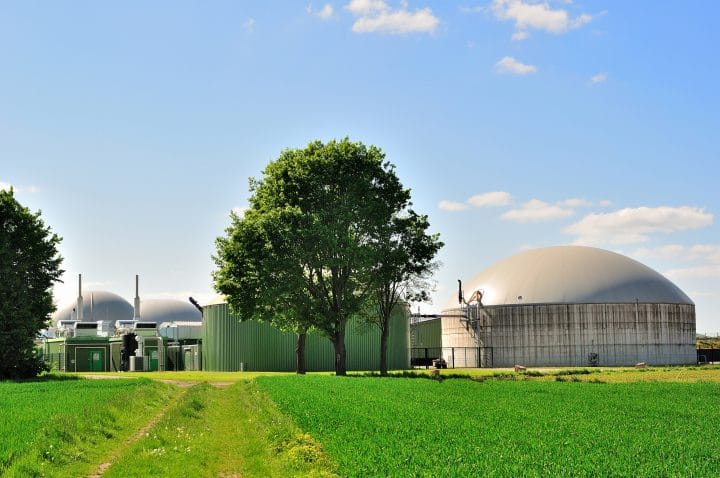
Issues With Bioenergy
There is some debate surrounding whether biomass is renewable or not. It is however generally considered to be a renewable energy source. This is because the organic matter it uses will always exist, for as long as life is supported on earth.
Biomass does of course come with several environmental impacts that should be taken into account. Although crops can absorb carbon dioxide whilst they are grown, they release it back into the atmosphere when burnt. This can be bad for air quality and our health.
Recap
With global energy demands increasing year on year, it’s now more important than ever to find sustainable ways of generating our energy. The use of solar, wind, geothermal, hydro, and biomass energy can help to achieve this.
Renewable energy sources have a key advantage over non-renewable alternatives in that they will never run out. They are also often much better for the environment. You can take a more in-depth look at the pros and cons of renewable energy here.